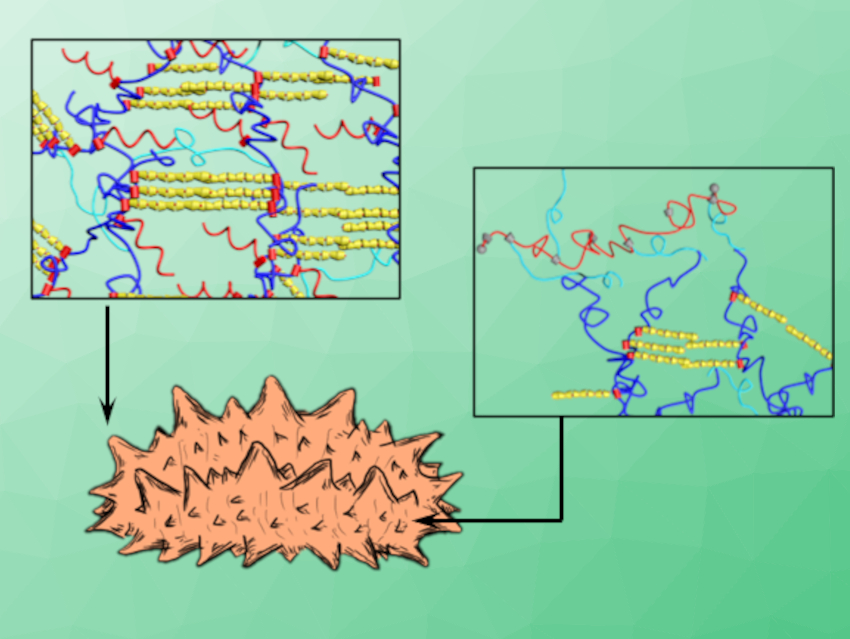Marine animals such as sea cucumbers and starfish can dynamically change their skin stiffness, e.g., to defend against or escape from predators. These properties could be mimicked, for example, by mechanically adaptive polymers that can dynamically change their stiffness as a response to environmental changes. 3D printing could be a promising method to create the desired structures from such materials. However, 3D-printing hydrogels that can continuously change from a soft rubbery state to a hard plastic state is challenging.
Chenfeng Ke, Dartmouth College, Hanover, NH, USA, and colleagues have developed a family of mechanically adaptive polypseudorotaxane-based 3D printing materials that can be used to create a sea cucumber mimic. The team synthesized a series of random copolymers with polyethylene glycol (PEG) sidechains (pictured in red). These polymers can form sidechain polypseudorotaxanes with α‐cyclodextrins (α‐CDs, pictured in yellow). The resulting hydrogels are 3D-printable.
When the PEG sidechains of these polymers are covered by cyclodextrins, they act like rigid, rod‐like structures, and the material becomes more crystalline and stiffens. The overall level of stiffness depends on the proportion of crystalline and amorphous components, and thus, on the α‐CD coverage on the sidechains. This can be influenced by changing the density of PEG units, allowing the researchers to prepare polymers with different, tunable stiffness changes in response to the addition of α‐CDs.
The researchers combined two of these polymer materials to print an artificial “sea cucumber” in which the skin and papillae (spikes on the skin) show different mechanical properties in changing environments. In the absence of α‐CD, the soft material can easily deform to slide through narrow gaps, mimicking sea cucumbers softening their body to hide. When the mimic was placed in an α‐CD solution, the “spikes” increased their rigidity, while the “skin”—made from a different polymer—still allowed deformation. These mechanically adaptive 3D-printing materials could, e.g., allow the fabrication of sophisticated soft robots.
- An Integrated Design of a Polypseudorotaxane‐based Sea Cucumber Mimic,
Longyu Li, Qianming Lin, Miao Tang, Esther H. R. Tsai, Chenfeng Ke,
Angew. Chem. Int. Ed. 2021.
https://doi.org/10.1002/anie.202017019



